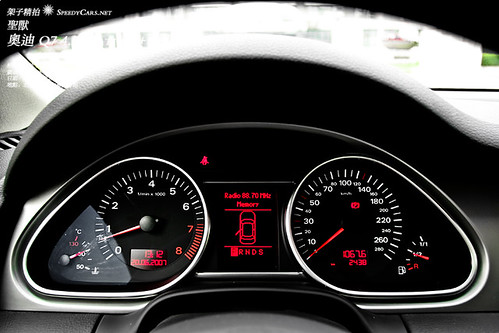
In an increasingly complex financial landscape, consumers are continually presented with myriad options for acquiring vehicles, and car leasing stands as a popular choice for many. The appeal often lies in lower monthly payments compared to traditional purchasing, the allure of driving a new vehicle more frequently, and the convenience of returning it after a fixed term. However, beneath this surface of perceived flexibility and affordability lies a labyrinth of contractual nuances that, if not meticulously navigated, can lead to significant financial disadvantages.
Navigating the intricacies of a car lease agreement requires more than just a cursory glance at the monthly payment. It demands a rigorous, detail-oriented approach, akin to what a seasoned financier would undertake when scrutinizing an investment. This article aims to empower consumers by shedding light on the critical traps embedded within many lease deals, providing the practical, unbiased, and data-driven insights characteristic of a robust consumer report. Our objective is to arm you with the knowledge necessary to approach leasing with caution, clarity, and an advocate’s mindset, ensuring that you seriously think twice before committing.
Understanding these potential pitfalls is not about deterring consumers from leasing altogether, but rather about fostering an environment of informed decision-making. By dissecting the common challenges and hidden costs associated with car lease contracts, we seek to equip you with the tools to identify less-than-favorable terms, negotiate from a position of strength, and ultimately secure a lease agreement that genuinely aligns with your financial goals and lifestyle. Let us begin this essential exploration into the often-overlooked elements that can define a lease’s true cost and impact.

1. **Misleading Advertised Offers**The initial attraction to a lease often begins with a compelling advertisement—a prominent display of an exceptionally low monthly payment or an irresistible zero-down offer. These advertisements are masterfully crafted to capture attention, presenting what appears to be an unbeatable deal that immediately piques a consumer’s interest. However, what glitters on the billboard or in the online banner may not reflect the full, unvarnished truth of the underlying contract. The core trap here lies in the discrepancy between the headline and the fine print, a gap that can prove costly.
Misleading advertised offers frequently omit crucial details that significantly impact the total cost of the lease. These omissions might include the requirement for a substantial capitalized cost reduction (effectively a down payment), the inclusion of various hidden fees, or the stipulation that the advertised rate is only available to a select group of highly qualified customers. The advertised price often represents an ideal scenario, contingent on specific terms and conditions that are rarely highlighted with the same prominence as the attractive monthly payment. For a consumer, the challenge is to move beyond the initial emotional response to these attractive numbers and engage in a more critical, analytical assessment.
Consumers are advised to treat all advertised offers as starting points for inquiry, rather than definitive statements of cost. It is imperative to request a complete breakdown of all charges, fees, and requirements associated with the advertised deal. This includes understanding the vehicle’s specific trim level, the actual capitalized cost, the money factor (equivalent to an interest rate in a loan), the residual value, and any acquisition or disposition fees. An objective analysis of these components will reveal whether the advertised offer maintains its allure under closer scrutiny or if it’s merely a hook designed to draw you into the dealership.
This meticulous examination of advertised offers empowers consumers to distinguish genuine value from superficial appeal. By adopting a skeptical yet informed perspective, you can protect yourself from the disappointment and financial burden of signing a contract based on incomplete or creatively presented information. The goal is to ensure that the attractive numbers you initially saw are transparently supported by the full contractual terms, leaving no room for unpleasant surprises once the ink is dry.
Read more about: Unlock Your Savings: 13 Simple Lifehacks to Boost Your Car’s MPG and Cut Fuel Costs by 15%

2. **High Down Payments (Capitalized Cost Reduction)**A down payment in a car lease agreement is known as a capitalized cost reduction. Its primary function is to lower the total amount of money being financed over the lease term, thereby reducing the monthly payment. On the surface, contributing a significant sum upfront may seem like a financially prudent move, as it directly impacts the affordability of your monthly obligation. However, the nature of leasing introduces unique considerations that make a high capitalized cost reduction a significant trap for many unsuspecting consumers.
The critical pitfall with a substantial down payment in a lease is the immediate financial risk it entails. Unlike purchasing a vehicle where a down payment builds equity, a lease means you never own the asset. Should the leased vehicle be stolen, declared a total loss in an accident, or if the lease needs to be terminated early, the capitalized cost reduction is often entirely forfeited. This means that a considerable sum of money that you paid upfront may not be recovered, effectively becoming a lost investment without any corresponding ownership benefit.
Consumer advocates often advise against making a large capitalized cost reduction in a lease, or at least to weigh the risks carefully. While it does lower monthly payments, the financial exposure in an unforeseen circumstance can be substantial. Instead of focusing solely on reducing the monthly outlay through a large upfront payment, consumers should prioritize understanding the total cost of the lease, including all fees and the money factor. It is often more financially sound to absorb slightly higher monthly payments than to risk a large, non-recoverable sum.
When evaluating a lease, it is practical to analyze scenarios where the vehicle is lost or the lease must be broken. This objective assessment helps to quantify the potential loss associated with a high capitalized cost reduction. Rather than being enticed by the immediate reduction in monthly costs, a savvy consumer will consider the broader financial implications and seek to minimize upfront expenditures that do not contribute to equity or are at high risk of being lost in adverse situations.

3. **Excessive Mileage Limits**One of the fundamental distinctions between leasing and purchasing a vehicle lies in the imposition of mileage limits within the lease contract. Lessors establish these limits to manage the depreciation of the vehicle, as higher mileage typically correlates with greater wear and tear and a reduced market value. While a necessary component of leasing, the trap arises when these limits are set unrealistically low for a consumer’s actual driving habits, or when the implications of exceeding them are not fully understood.
Many standard lease agreements come with annual mileage allowances, commonly ranging from 10,000 to 15,000 miles. For some drivers, this range is perfectly adequate. However, for those with longer commutes, frequent travel, or unforeseen changes in lifestyle, these limits can quickly become restrictive. The “excessive” aspect of the trap refers to a limit that is insufficient for your needs, leading inevitably to incurring penalties at the end of the lease term. Consumers often underestimate their true mileage, swayed by the lower monthly payments associated with tighter limits, without truly calculating their typical usage.
The financial ramifications of exceeding mileage limits are not trivial. Lease contracts typically stipulate a per-mile charge for every mile driven beyond the agreed-upon cap, with rates commonly ranging from $0.15 to $0.30 per mile. These charges can accumulate rapidly, transforming what seemed like a minor oversight into a substantial lump-sum payment at lease termination. A consumer who drives an extra 5,000 miles per year over a three-year lease, for example, could face thousands of dollars in unexpected penalties, significantly inflating the overall cost of the lease.
To avoid this trap, a pragmatic approach involves a thorough assessment of your past and projected driving habits. Review your vehicle’s odometer readings from previous years, consider any upcoming changes in your commute or travel plans, and err on the side of caution. It is almost always more cost-effective to negotiate a higher mileage allowance upfront, even if it results in a slightly increased monthly payment, than to face punitive charges at the lease’s conclusion. This proactive measure ensures the lease terms genuinely align with your practical needs.
Read more about: 15 Undervalued 1970s Classic Cars That Are Smart Buys for Enthusiasts Today

4. **Wear-and-Tear Penalties**At the conclusion of a lease term, the vehicle undergoes a thorough inspection to assess its condition against the lessor’s predefined standards. This process often unveils another significant trap: wear-and-tear penalties. While lease agreements generally account for “normal wear and tear,” the precise definition of what constitutes “normal” can be highly subjective and often heavily favors the lessor. What a consumer might consider minor cosmetic imperfections can be classified as “excessive” damage, leading to unexpected charges.
The ambiguity surrounding the definition of acceptable wear and tear is where the trap truly lies. Lessors typically provide vague guidelines, which can be interpreted broadly to justify additional fees for dents, scratches, chipped paint, damaged upholstery, or excessive tire wear. These are conditions that go beyond what is considered typical for the age and mileage of the vehicle. The consumer is often left to the mercy of the inspector’s judgment, potentially facing substantial repair bills that were not anticipated at the time of signing the contract.
Examples of items that frequently incur wear-and-tear penalties include small dings and dents that are larger than a credit card, windshield chips, scrapes on alloy wheels, excessive tire tread wear (beyond safety limits or below a specific depth), and any interior damage such as tears, stains, or burns. Each of these can lead to individual charges, which can quickly add up to a significant sum. For consumers, the challenge is understanding these specific thresholds, which are not always clearly communicated or easily accessible throughout the lease term.
To safeguard against this trap, consumers should meticulously document the vehicle’s condition at the time of lease inception, including photographs or video, and retain this evidence. Throughout the lease, it is prudent to address minor damages promptly, comparing potential repair costs to the likely penalties. Additionally, understanding the specific guidelines provided by the lessor well in advance of the lease return, and even scheduling a pre-inspection if offered, can help mitigate surprises and empower you to address issues proactively before final turn-in, ensuring a more objective assessment.
Read more about: Consumer Alert: Unmasking the 13 Car Dealership Scams That Cost Buyers Thousands

5. **Termination Fees and Early Exit Penalties**Entering into a car lease agreement is a legally binding commitment for a fixed period, typically spanning two to four years. While life circumstances can be unpredictable, the financial obligations of a lease are generally not designed for easy or inexpensive early termination. One of the most severe financial traps for consumers is the imposition of substantial termination fees and early exit penalties, which can far exceed the perceived remaining value of the contract.
These penalties exist because lessors calculate their expected return on the vehicle over the full lease term, including its projected residual value at the end. When a lease is terminated early, the lessor loses out on future payments and must liquidate the vehicle sooner than planned, often at a wholesale value that is less than the remaining contractual obligation. The early termination fee is designed to recoup these losses and cover administrative costs, making it a protective measure for the lessor at the consumer’s expense. It is a critical component that underscores the long-term commitment a lease represents.
The mechanics of early exit penalties can be particularly complex and punitive. They often involve a calculation based on the difference between the remaining balance of the lease (which includes unpaid depreciation, future rent charges, and the vehicle’s residual value) and the vehicle’s current market value at the time of termination. This calculation frequently results in a substantial lump sum payment required from the consumer, which can amount to many thousands of dollars. Consumers are effectively responsible for the depreciation and rent charges for the entire term, even if they return the car early.
Before signing any lease, it is paramount for consumers to thoroughly understand the early termination clause and its associated costs. Requesting a clear explanation of how these penalties are calculated under various scenarios can provide invaluable foresight. While no one plans for unforeseen events, acknowledging the financial implications of an early exit allows for a more informed decision and potentially encourages the consideration of alternatives like lease assumption or transfer, which can sometimes mitigate, though rarely eliminate, these significant charges. This proactive understanding is a cornerstone of responsible financial planning within the leasing framework.
Read more about: Six Critical Car Loan Terms That Financial Experts Urge You to Avoid

6. **Residual Value Miscalculations**A cornerstone of any car lease agreement is the “residual value”—the estimated wholesale market value of the vehicle at the end of the lease term. This figure critically determines your monthly payments by representing the portion of the vehicle’s depreciation that you are not financing. Lessors calculate residual values based on their projections of future market conditions, the vehicle’s expected depreciation rate, and its anticipated desirability. A higher residual value generally translates to lower monthly payments, making it an attractive, albeit often opaque, factor for consumers.
However, the setting of the residual value often presents a significant trap for the unsuspecting lessee. While presented as an objective projection, these figures can sometimes be manipulated or set to disproportionately benefit the lessor. If a lessor inflates the residual value beyond what the vehicle’s actual market value will be at lease end, it appears to lower your monthly payments. This miscalculation often makes returning the vehicle the only financially sensible choice, regardless of any desire to own it, creating an illusion of affordability that doesn’t reflect true value.
The implications for consumers extend beyond just the monthly payment. An artificially high residual value can also diminish your leverage if you decide to purchase the vehicle at lease end. You are essentially bound by the predetermined buyout price, which might be thousands of dollars above the car’s true market value. Conversely, if the residual value is set too low, while it might lead to slightly higher monthly payments, it could present a more advantageous purchase opportunity later, as you would be buying the vehicle for less than its market worth. The challenge is discerning whether the residual value reflects accurate future depreciation or is optimized for lessor profit.
To navigate this crucial aspect of leasing, consumers must undertake independent research. Consult reliable automotive resources such as Kelley Blue Book (KBB) or Edmunds, which provide tools to estimate residual values for specific makes, models, and trims. Compare these independent projections with the residual value presented in your lease offer. Question significant discrepancies and negotiate the capitalized cost, which indirectly impacts the residual value calculation. A thorough understanding and verification of the residual value ensures that you are financing a realistic amount of depreciation and are not inadvertently signing up for a deal that overvalues the vehicle at the end of its term.

7. **Overlooked Insurance Requirements**Lease agreements impose insurance requirements far exceeding basic legal mandates for car owners. Because the leasing company retains ownership of the vehicle throughout the lease term, they impose stringent and specific insurance stipulations designed to protect their asset. These often-unnoticed requirements, hidden in fine print, can lead to substantial, unexpected increases in monthly insurance premiums, catching consumers off guard.
The trap here lies in underestimating the cost and scope of these mandated insurance policies. Lessors typically require comprehensive and collision coverage with lower deductibles than a personal vehicle owner might choose. They also frequently demand higher liability limits, sometimes significantly exceeding state minimums. For example, a lessor might require $100,000/$300,000 in bodily injury liability and $50,000 in property damage, along with specific requirements for comprehensive and collision coverage, perhaps with deductibles no higher than $500. These enhanced coverages, while beneficial in a major accident, come at a premium that can drastically inflate your overall monthly car expenses.
Gap Insurance, or Guaranteed Asset Protection, is a critical, often overlooked, requirement. This type of insurance covers the “gap” between the actual cash value of the vehicle and the remaining balance on your lease if the car is declared a total loss due to theft or accident. Given that a leased vehicle depreciates quickly in its initial years, especially if you put little or no money down, the amount you owe on the lease can easily exceed the vehicle’s market value. Without Gap Insurance, you risk substantial out-of-pocket liability for this difference. While some lessors include Gap Insurance automatically, many do not, or they offer it as an expensive add-on, making it a crucial point for consumer vigilance.
To avoid being caught off guard by these elevated insurance costs, it is imperative to obtain detailed insurance quotes *before* finalizing your lease agreement. Provide your insurance provider with the exact specifications of the lease, including the make, model, year, and crucially, all the insurance requirements stipulated in the lease contract. This proactive step allows you to accurately budget for the true total cost of the lease, incorporating the often-higher insurance premiums. Understanding and securing appropriate coverage, especially Gap Insurance, protects you not only from unexpected monthly expenses but also from potentially catastrophic financial liability in the event of an unforeseen loss.
Read more about: Navigating the Tire Market: 15 Essential Tips to Secure the Best Price and Maximize Value for Your Next Set of Tires

8. **Ambiguous End-of-Lease Terms**The conclusion of a car lease agreement often appears straightforward—simply return the vehicle and walk away. However, the end-of-lease process often leads to unexpected charges and confusion, particularly when terms are ambiguous or misunderstood by the consumer. Lessors frequently embed various fees and specific conditions that only become apparent as the lease approaches its expiration, transforming what should be a seamless transition into a source of frustration and additional financial outlay.
The primary trap here is a lack of clarity regarding end-of-lease responsibilities and associated costs. Lease contracts typically include provisions for “disposition fees,” “reconditioning fees,” and charges for “excess wear and tear”—the latter of which we’ve already discussed as a distinct pitfall. Disposition fees are administrative charges for processing the returned vehicle, regardless of its condition or whether you purchase it. Reconditioning fees, though less common as a separate line item, can be implicitly factored into charges for damage beyond normal wear. The vagueness surrounding what constitutes “normal” vs. “excessive” wear and the lack of transparent guidelines throughout the lease term can lead to substantial, unanticipated bills at turn-in.
These “gotcha” moments often materialize during the final vehicle inspection. Minor scratches or door dings, which a consumer might overlook, can be classified as excessive damage by the lessor’s inspector, triggering costly repair charges. Moreover, if the vehicle needs specific maintenance or new tires to meet return standards, these costs fall on the lessee. The entire process of returning the vehicle versus exercising a purchase option is also often riddled with specific deadlines and procedural requirements, missing which can incur further penalties or limit consumer choice. Without a clear understanding of these nuances, consumers are vulnerable to paying for charges they did not anticipate or budget for.
To safeguard against the ambiguity and potential financial surprises at the end of your lease, meticulous review of the end-of-lease clause is paramount. Request a clear, itemized explanation of all potential fees associated with lease termination and vehicle return, and ensure these explanations are provided in writing. Ask about the procedures for pre-inspection, if available, as this can offer an early assessment of potential wear-and-tear charges. Furthermore, understand the exact timeline and requirements if you intend to purchase the vehicle at its residual value. Proactive planning and a thorough understanding of these terms—well before expiration—are essential for a smooth, financially predictable transition, avoiding unexpected costs and enabling informed decisions.

9. **Limited Negotiation Awareness**A pervasive misconception is that car lease terms are largely fixed, with only the monthly payment negotiable. This belief, often fostered by dealerships presenting leases as pre-packaged deals, is a significant financial trap. Failing to recognize the many negotiable components means consumers miss saving thousands, effectively overpaying for leasing convenience.
The core trap is the consumer’s sole focus on the monthly payment, an outcome of several underlying variables. Lessors are adept at adjusting these variables to hit a target monthly payment, often at the consumer’s expense. For instance, they might reduce the capitalized cost reduction (down payment) to appear attractive, but inflate the money factor (the lease’s equivalent of an interest rate) or extend the lease term, resulting in more total payments. Without a comprehensive understanding of each variable’s impact, consumers lack the leverage to negotiate a truly favorable deal.
Virtually every aspect of a lease agreement is, to some extent, negotiable. The “capitalized cost” – essentially the selling price of the car – is a prime example; negotiating a lower capitalized cost directly reduces the amount of depreciation you finance. The “money factor,” which reflects the financing charge, can also be negotiated down. Acquisition fees, disposition fees, and even the mileage allowance can often be adjusted. Consumers should research the fair market value of the vehicle they wish to lease, as well as competitive money factors for their credit rating, before stepping into a dealership. This data-driven approach transforms negotiation from guesswork into informed discussion.
To empower yourself in the leasing negotiation process, adopt a holistic perspective. Do not limit your focus to the monthly payment alone. Instead, scrutinize and negotiate each individual component: the capitalized cost, the money factor, the acquisition fee, the mileage allowance, and even the potential disposition fee. Be prepared to compare offers from multiple dealerships and even different brands. If a deal doesn’t feel right or transparent, be ready to walk away. Arming yourself with knowledge about each line item of the lease contract and understanding its financial implications is the most effective strategy to secure a lease agreement that genuinely aligns with your financial interests, rather than one solely optimized for the lessor.
Read more about: The 12 Most Important US Laws Affecting Remote Workers in 2025: A Foundational Review

10. **Ignoring Lease Transfer Options**For consumers facing unforeseen life changes or dissatisfaction with their leased vehicle, early lease termination incurs extremely costly penalties. However, many consumers overlook a significant trap: the strategic importance of “lease transfer” options. Unawareness of this alternative can lead directly to the financial burden of early termination fees, bypassing a viable, often more economical, exit strategy.
A lease transfer, sometimes referred to as a lease assumption, involves another party taking over the remainder of your lease agreement. The new lessee assumes responsibility for the remaining monthly payments, mileage allowances, and end-of-lease obligations. This mechanism offers the original lessee a crucial lifeline, allowing contract exit without substantial early termination fees lessors impose to recoup lost revenue. For the new lessee, it can be an attractive option to acquire a late-model vehicle with lower monthly payments and a shorter lease term than a new lease.
While strategic, lease transfers present complexities and challenges. The primary obstacle is often finding a qualified individual willing to assume the lease. Online platforms specifically designed for lease transfers have emerged to facilitate this process, connecting lessees with potential assumers. However, there are typically transfer fees involved, which can vary depending on the leasing company. Furthermore, it is critical for the original lessee to understand their “contingent liability”—in some cases, if the new lessee defaults on payments, the original lessee may still be held responsible by the leasing company. This highlights the importance of vetting potential assumers and understanding precise transfer agreement terms.
To leverage the flexibility that lease transfer options can provide, consumers should first verify if their specific lease agreement permits transfers. Not all lessors allow this, and those that do will have their own set of rules and fees. If a transfer is allowed, research reputable online marketplaces that specialize in lease assumptions. Prioritize a clear understanding of all associated transfer fees and, crucially, clarify the extent of your contingent liability after the transfer is complete. Proactively exploring lease transfer as an alternative to early termination can save thousands, navigating unforeseen life changes with greater agility and less financial stress, thus becoming a powerful tool for informed lease management.
Read more about: Drive Safer and Smarter: The 12 Essential Car Software Updates for Enhanced Security and Performance
Navigating car leasing demands an astute, detail-oriented approach beyond the allure of low monthly payments. The pitfalls examined—from misleading offers and high down payments to overlooked insurance mandates and complex end-of-lease terms—underscore the necessity for consumers to adopt a financier’s mindset. These insights, paired with understanding lease transfer options and awareness of negotiable components, empower confident leasing. Recognizing broader bad merchant practices, like high-pressure tactics or unnecessary add-ons, and understanding common misleading schemes, equips you to demand transparency and fairness. Ultimately, an informed consumer is the most powerful defense against unfavorable terms, ensuring your next car lease serves your interests, not becoming an unexpected financial burden. Take the time, ask the hard questions, and seriously think twice before you sign.


